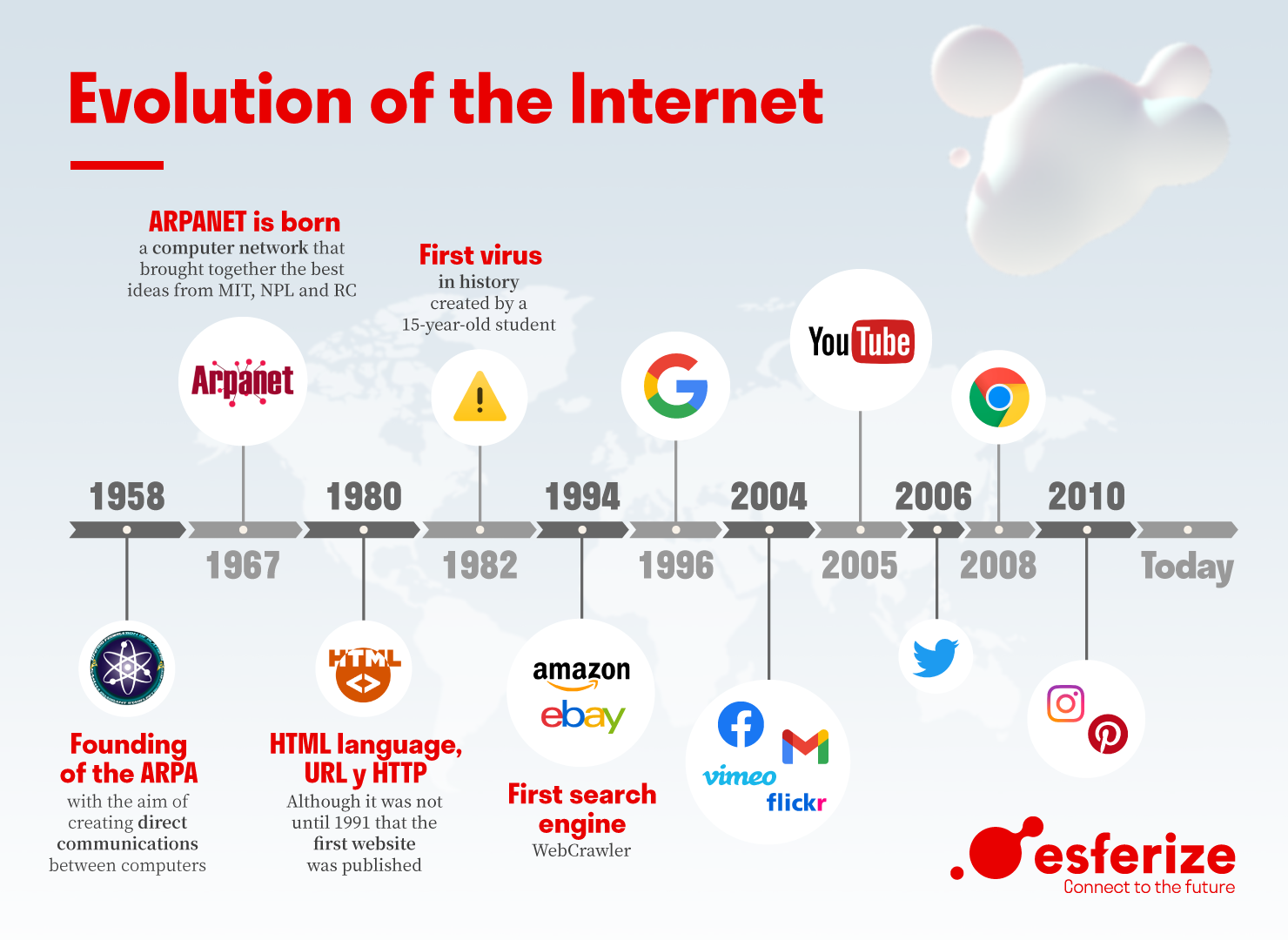In the 1960s, there was already talk of computer networks that would allow general communication between users of various computers. However, it is not until 1982 that the Internet is considered to be the year in which it was “born”. Throughout this post, we will see how the Internet has evolved and we will briefly explain its most important milestones throughout history.

1958 – Founding of the ARPA
In this year, the Advanced Research Projects Agency Network was founded.
This organisation was made up of some 200 scientists and its aim was to create direct communications between computers.
1967 – ARPANET is born
This year saw the first connection between computers at Stanford and UCLA. ARPANET was a computer network that brought together the best ideas from teams at the Massachusetts Institute of Technology (MIT), the National Physics Laboratory (NPL) and the Rand Corporation (RC).
1980 – HTML language, URL and HTTP
Tim Berners-Lee joined the European Organisation for Nuclear Research (CERN) that year as a software engineer. In 1989 he presented a solution to the problems of data loss thanks to a distributed hypertext system.
By 1990, Berners-Lee had developed three technologies: HTML, URLs and the hypertext transfer protocol HTTP.
1982 – First virus
Although there were earlier virus cases, the virus created by Rich Skrenta is considered the first. The 15-year-old student programmed the so-called Elk Cloner for the Apple II, the first computer virus to have a real spread.
Today, Rich is a Silicon Valley entrepreneur who created the web search engine Blekko.
1994 – The first search engine and the first online shops
The first full-text search engine was WebCrawler. Unlike its predecessors, it allowed users to perform a keyword search on any website. In addition, Yahoo!, Excite, Infoseek, Inktomi, Northern Light and Altavista were also launched that year.
Although the first online sales are said to have taken place on the Net Market service, in reality it was not until 1994 that the first online shops, including Amazon and eBay, were launched.
1996 – Google
Larry Page and Sergey Brin launched today’s quintessential search engine: Google. The initial project was called BackRub, as that was the name of the technology they used.
Google based the operation of its search engine on the relevance of the contents of each web page for the users themselves. In other words, it prioritised those results that users considered most relevant to a specific topic. To do so, it patented its famous PageRank, a series of algorithms that assess the relevance of a website by assigning it a score from 0 to 10.
2004 – Social networks
The 21st century began with the creation of Wikipedia, Safari, MySpace, LinkedIn, Skype and WordPress. However, it was not until 2004 that Facebook, Vimeo, Flickr and Gmail appeared.
2005 – YouTube
2006 – Twitter
2008 – Google Chrome
2010 – Instagram y Pinterest
2011 – Snapchat
2016 – TikTok
Present
In Spain alone, there are currently 40.7 million social network users, equivalent to 87.1% of the Spanish population. In addition, 44 million use the Internet daily for an average of 6 hours.
The Internet is growing by leaps and bounds. We don’t know what technologies the near future will bring, or what applications of the Internet of Things will surprise us. Will the metaverse and virtual worlds be here to stay or is it just another passing fad?





